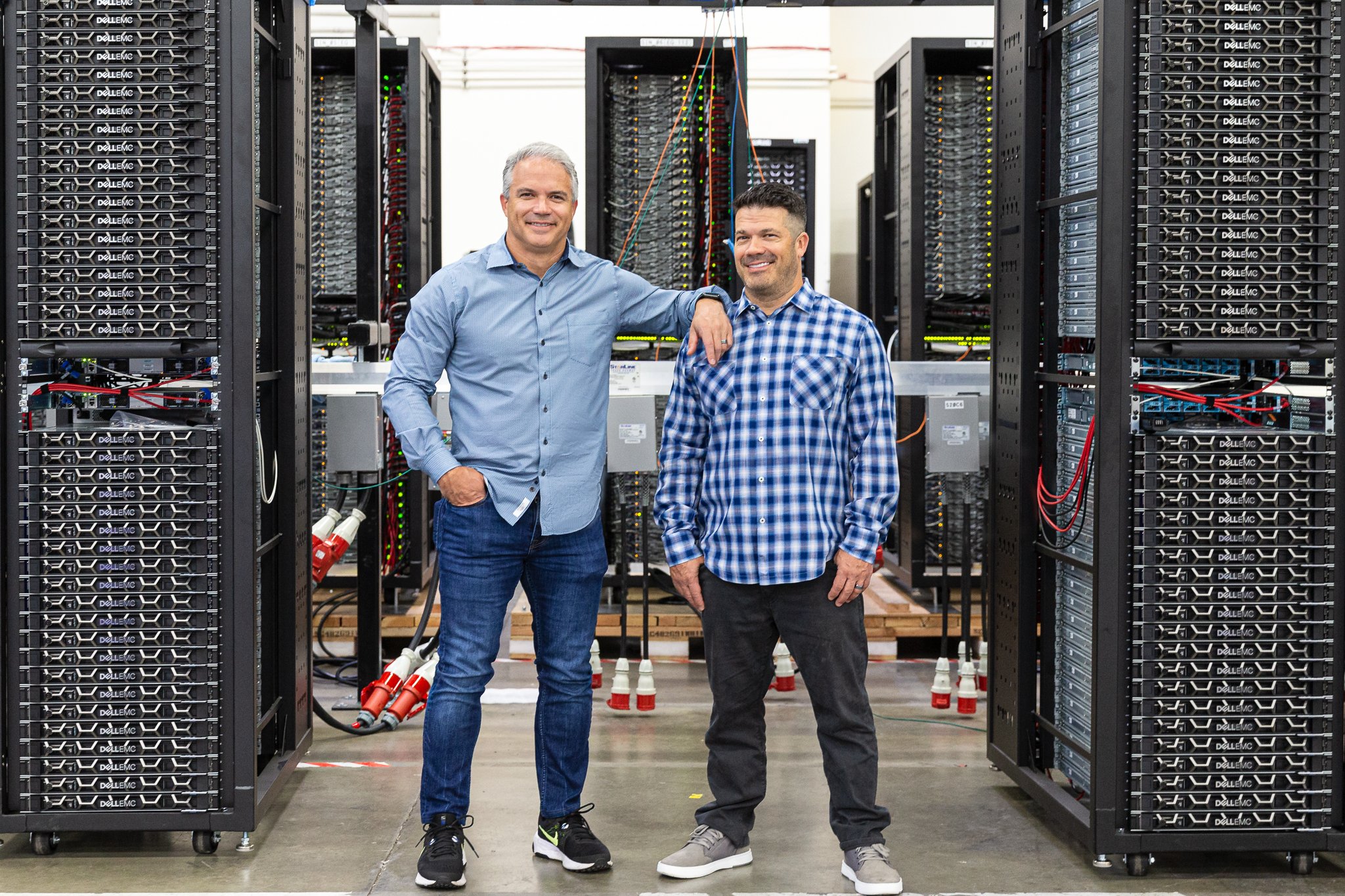Many enterprises are investing significant resources into artificial intelligence, hoping to unlock new efficiencies and gain a competitive edge. Yet, a surprising number of these projects fail to deliver on their promise. The culprit is often not the AI model itself, but the data it relies on. Foundational issues within an organization's data infrastructure can create significant roadblocks, preventing AI from scaling effectively and delivering a positive return on investment.
This post will explore the critical data-related barriers that hinder AI progress, particularly for organizations running projects on-premises or in cloud environments like AWS and Microsoft Azure. We will cover:
- Four technical barriers that quietly sabotage AI initiatives.
- The unique challenges of managing data for AI in both on-premises and cloud setups.
- How Redapt's approach helps build a solid data foundation to accelerate AI outcomes.
Critical Technical Barriers to AI Success
AI models are only as good as the data they are trained on. When data is flawed, the AI's performance suffers. Research shows that a staggering 67% of AI projects fail due to issues with data readiness (Gartner). Let's examine four common technical barriers that prevent organizations from achieving their AI goals.
- Semantic Ambiguity
Data often loses its business context as it moves through traditional data pipelines. An AI model may receive data that is technically accurate but lacks the meaning required for proper interpretation.
Consider a customer database where a record reads: CUST001, A, 3, 1299.50. Without context, this is just a string of characters and numbers. Does "A" mean "Active" or "Approved"? Does "3" refer to a risk level or a geographic region? This semantic ambiguity forces AI models to operate on meaningless data, leading to outputs that may be statistically sound but practically useless.
- Data Quality Degradation
In many data ecosystems, information passes through multiple transformation steps—joins, aggregations, and mappings. Each step introduces a small risk of error. What starts as 95% accurate data at the source can degrade significantly by the time it reaches the AI model.
For example, a customer order processing pipeline might start with accurate data, but joining it with order histories could introduce errors from mismatched IDs. By the time it's used for feature engineering, its accuracy could drop to 70% or lower, falling far short of the 99%+ reliability required for production AI systems. This "compound error" problem quietly undermines model performance.
- Temporal Misalignment
Enterprise systems rarely operate in perfect sync. Data from different sources is often extracted at different times, creating temporal misalignment. A sales forecasting model might be trained using morning sales data and afternoon weather data, leading it to assume knowledge of the future that won't exist in a real-world scenario.
This temporal leakage creates an illusion of high accuracy during training but results in poor performance in production. The model learns to make predictions based on data that wouldn't be available at the moment of decision, embedding a fatal flaw into its logic.
- Format Inconsistency
Different systems speak different languages. A product ID might be "PROD_12345" in your e-commerce platform, "12345-LAPTOP" in inventory, and "L-12345" in finance. Price formats, status codes, and timestamps can also vary wildly between systems.
This format inconsistency creates an integration nightmare. For an AI system, this noise is debilitating. It struggles to correlate information across systems, leading to inaccurate recommendations, flawed forecasts, and irrelevant customer service interactions.
An added challenge for many enterprises is regulatory pressure. Compliance requirements like GDPR, HIPAA, and data residency laws can delay or block AI deployment when governance isn't embedded into data processes from the start.
On-Premises vs. Cloud: Unique Data Challenges
These data challenges manifest differently depending on your infrastructure.
On-Premises Environments
Organizations with on-premises data centers often deal with legacy systems and fragmented data flows. Data is siloed in different departments, each with its own databases and custom ETL processes. This creates a complex and brittle architecture where ensuring data quality, consistency, and semantic clarity across the enterprise becomes a massive undertaking. Scaling AI in this environment is slow and expensive, as each new use case often requires a new, custom-built data pipeline.
Cloud Projects with AWS & Microsoft
While cloud platforms like AWS and Microsoft Azure offer powerful tools for data storage and processing, they don't automatically solve these foundational data problems. Moving to the cloud can sometimes amplify them. A "lift-and-shift" migration often just moves fragmented data flows from on-premises servers to cloud infrastructure.
Without a clear data strategy, organizations can end up with a sprawling collection of cloud services (e.g., Amazon S3, Azure Blob Storage, various databases) that perpetuate the same issues of semantic ambiguity and inconsistency. Many enterprises are also evaluating risks around data ingress and egress in large language models, where ungoverned usage can expose sensitive data. Managing data governance and quality across these distributed cloud environments requires a deliberate and structured approach.
Accelerate Your AI Journey with Redapt
Overcoming these data challenges requires a fundamental shift in how organizations manage their data. Instead of treating data as a byproduct of business operations, you must treat it as a product. Redapt’s approach aligns with modern data architectures such as data mesh, data fabric, and domain-driven data products to ensure scalability and clarity. Redapt’s Data and AI team partners with organizations to build modern, AI-native data architectures that provide the quality, context, and reliability needed for successful AI deployment.
Our approach focuses on three key areas:
- AI-Native Data Product Architectures
We help you move away from brittle, custom ETL pipelines and toward a more flexible data product architecture. In this model, data is packaged into reusable, manageable "data products." Each data product (e.g., a "Customer Profile" or "Inventory Status") combines raw data with the rules, context, and quality guarantees needed for a specific business purpose. This approach makes it easier to deliver high-quality, trusted data to your AI applications.
These architectures can be implemented across platforms like AWS Glue, Lake Formation, SageMaker, Kafka, Microsoft Purview, Synapse, Fabric, and Event Hub.
- Inline Data Governance
Traditional data governance often involves quality checks after the data has already been processed, which is too late for AI. We help implement inline governance, where quality rules and business logic are embedded directly into the data processing flow. For a customer profile data product, this means automatically validating email formats, ensuring age values are within a logical range, and enforcing consistency in loyalty status categories. This level of quality is also foundational for MLOps pipelines in SageMaker, MLflow, Kubeflow, and Vertex AI, which fail without upstream data consistency. This built-in quality control ensures your AI models receive reliable data from the start.
- The Semantic Layer
To solve the problem of lost business context, we work with you to build a semantic layer. This layer acts as a "translation service," mapping technical data fields to clear business terms. Instead of seeing "segment: 3," your AI system understands "high-value customer." This allows the AI to make decisions based on business meaning, not just statistical correlation. A robust semantic layer also ensures operational continuity, allowing your AI systems to function seamlessly even when underlying data sources are changed or migrated.
This clarity is also essential for retrieval-augmented generation (RAG) and vector databases like Pinecone, Weaviate, FAISS, and pgvector, which rely on accurate embeddings and taxonomy.
By focusing on these core principles, we help organizations transform their data infrastructure from a blocker into an accelerator. With a foundation of action-ready data, you can reduce AI project timelines from months to weeks, improve model accuracy, and finally achieve the transformative potential of artificial intelligence.
Contact Us
If you're unsure where the roadblocks are, schedule a Data Readiness Assessment with Redapt or request our AI Data Pitfall Checklist to uncover and address the biggest risks before they stall progress.
If your data is holding back your AI progress, it’s time for a new approach. Let’s work together to build a data foundation that empowers innovation and drives real business outcomes.













